
Key Points
- Large Caps Drive Higher
- Small Caps Knock on Resistance Once Again, Will They Break Out?
- 10yr Note Tests Support Again as the Flattening Continues
- Commodities Receive a Strong Bid, but Relative Performance Is Lacking
- Dollar Tests Support during Consolidation, Long-Term Bullish Trend Remains Intact
U.S. Equities
That’s a new all-time closing high for the S&P 500, closing out the holiday week at 4,725. Despite opening below the 10-week moving average on the 20th, the index rallied the remainder of the week in the face of negative headlines around new COVID-19 variants and deteriorating Breadth. As we’ve mentioned in the prior week’s note, this week’s new closing high was also unconfirmed by the 14-week RSI, with a noteworthy divergence playing out and could signify upcoming short-term pressure for the index to overcome. With price above rising 10 & 40-week moving averages and momentum remaining well within the Bullish range that has characterized the recovery out of the COVID crash, our bias remains to the upside in the S&P 500 over the intermediate-term.
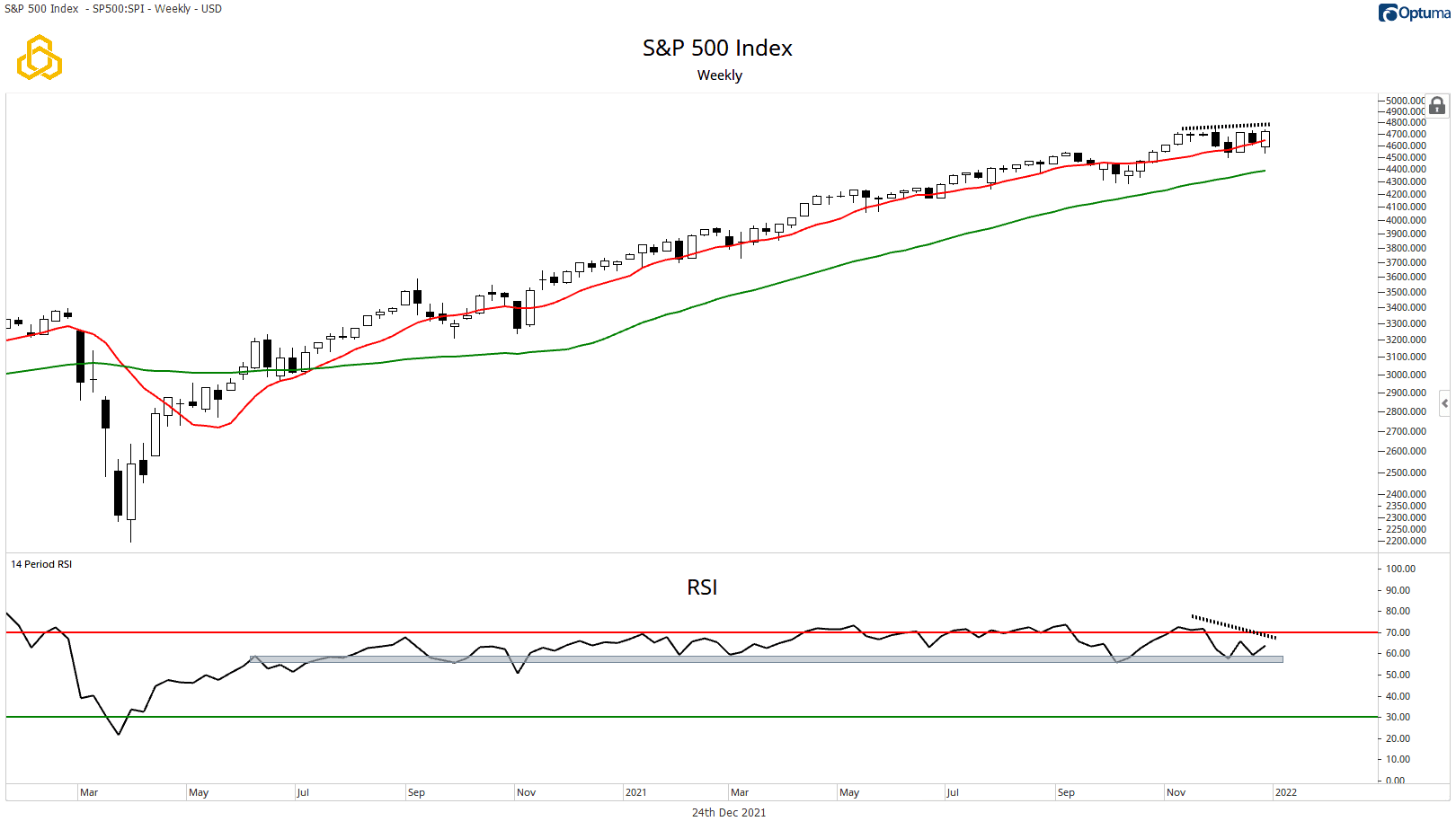
Small Caps opened the week lower and rallied, only to be stopped dead in their tracks at the 10-week moving average at the 1,400 resistance level that has troubled this group all year long. Despite the rally attempt, the 14-week RSI remains unable to break out of the bearish range. Relative to the S&P 500, the group has broken support at the 148 level and is unable to gain any material strength in that arena. While these are all generally bearish developments, we do note that Small Caps have not completely broken out of the year-long trading range to the downside. With flat 10 & 40-week moving averages, much of the price and indicator action is telegraphing a trendless environment until 1,400 can be taken out to the upside or 1,250 to the downside.
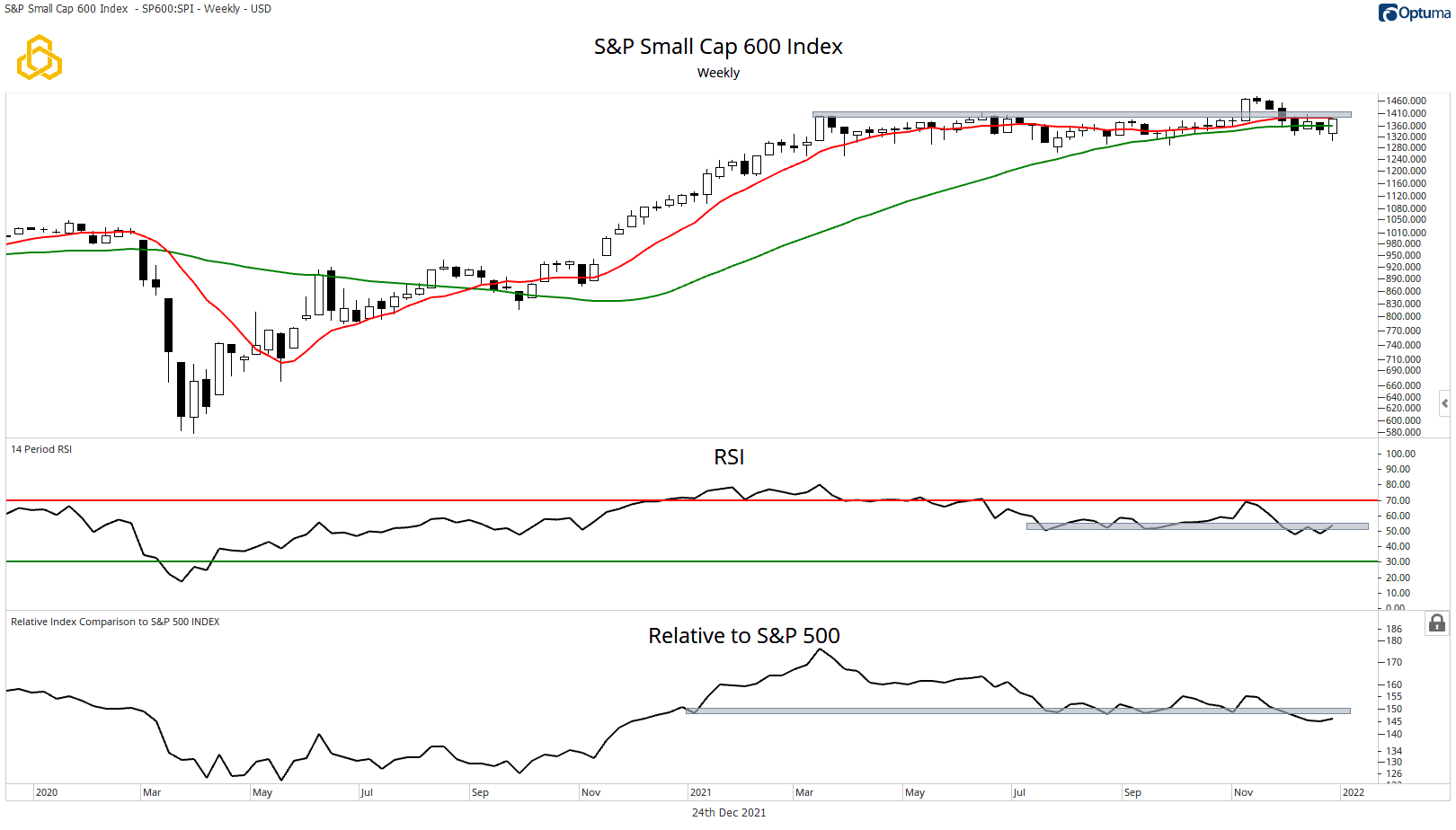
Small Cap sectors are currently a trend-follower’s worst nightmare and a range trader’s best friend. Despite recent strength on the week, several sectors were unable to make any noteworthy developments, save for consumer discretionary.
- Technology – Testing declining resistance line.
- Materials –Testing 680 resistance.
- Financials – The largest weight in the S&P 600, testing resistance at 1,215.
- Consumer Discretionary – Potential false breakdown in the works, recovering ground above 1,000.
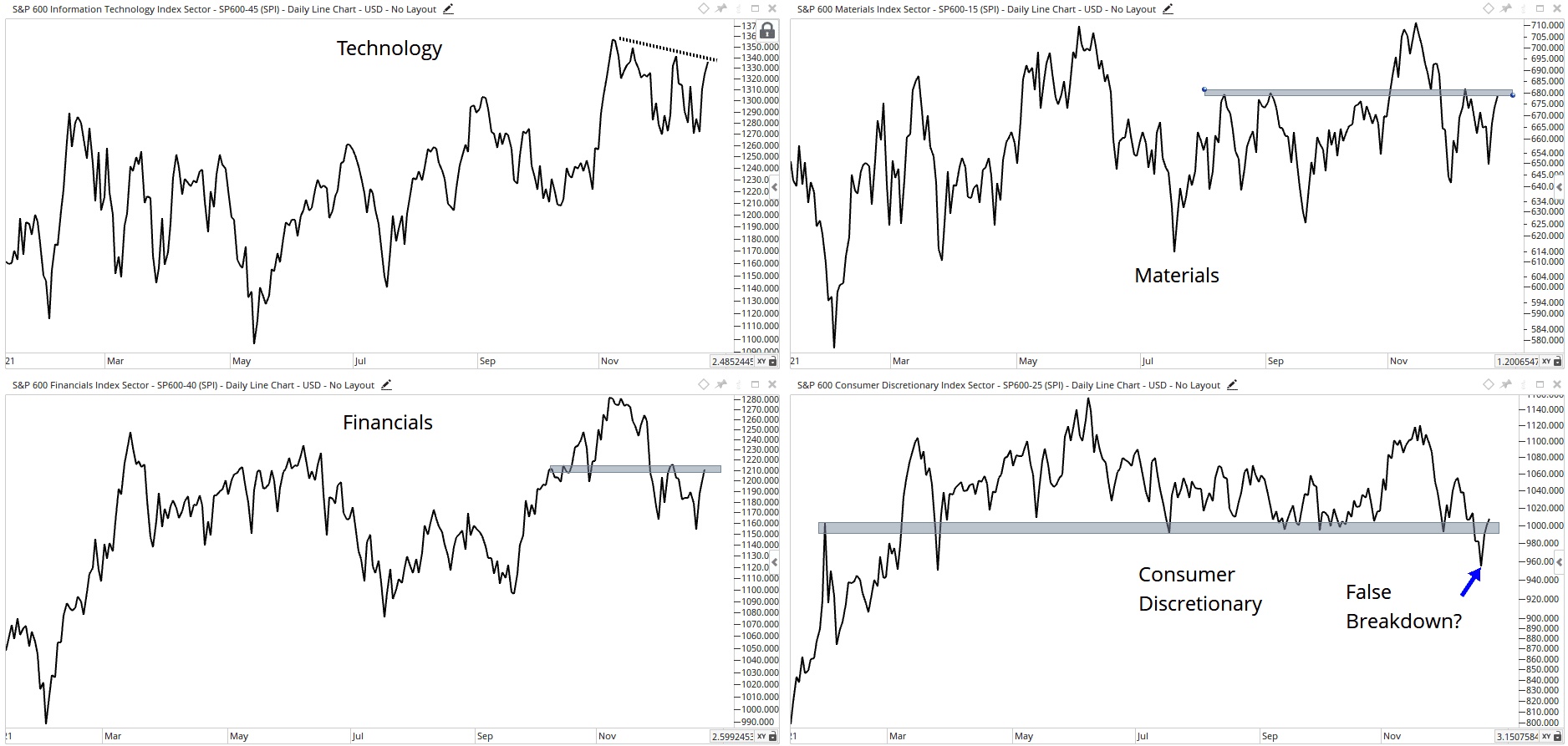
The NASDAQ Composite regained ground and closed above its 10-week moving average this week but was unable to print any meaningful readings on the 14-week RSI. The long-term trend remains bullish with price above rising 10 & 40-week moving averages with momentum maintaining the same bullish range that has defined the trend post-COVID crash. The weakness, however, is showing up on a relative basis vs. the S&P 500—unable to break out of 330 resistance that’s troubled the index since Q1 of this year. In our view, the lack of progress relative to the S&P 500 represents the biggest risk in this space for the time being but would need to see 14,300 give way to the downside to confirm.
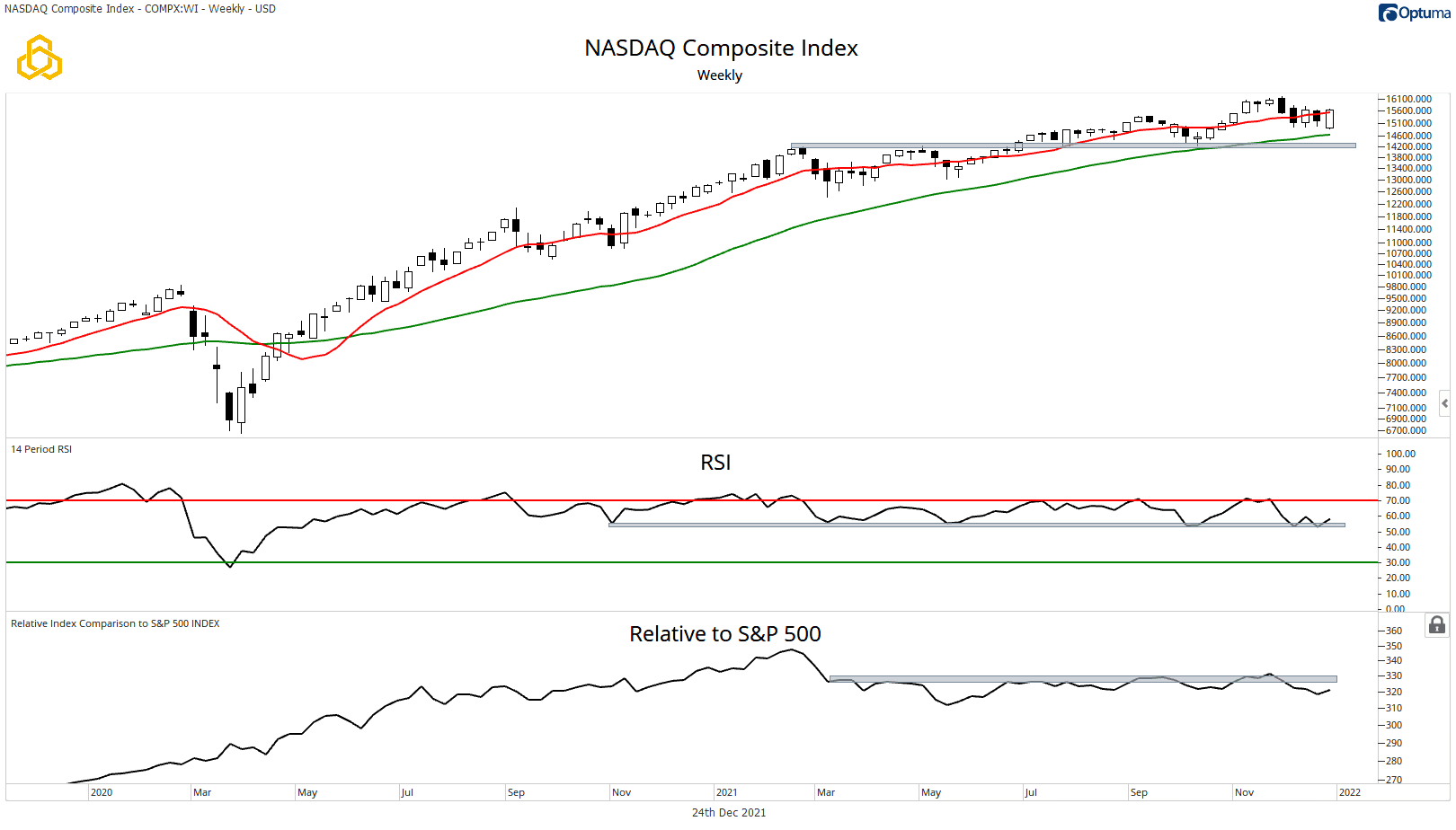
U.S. Fixed Income
The 10-Year Treasury Note closed below its 10-week moving average into the 130-131 zone of polarity that buyers are now defending. While price closed out the week below declining 10 & 40-week moving averages, buyers have yet to throw in the towel at these levels and are being tested again. Yields closed higher on the week but still have some headroom to get to the 1.75% resistance level. Until there’s any material development in these highlighted levels, we maintain a neutral fixed income bias.
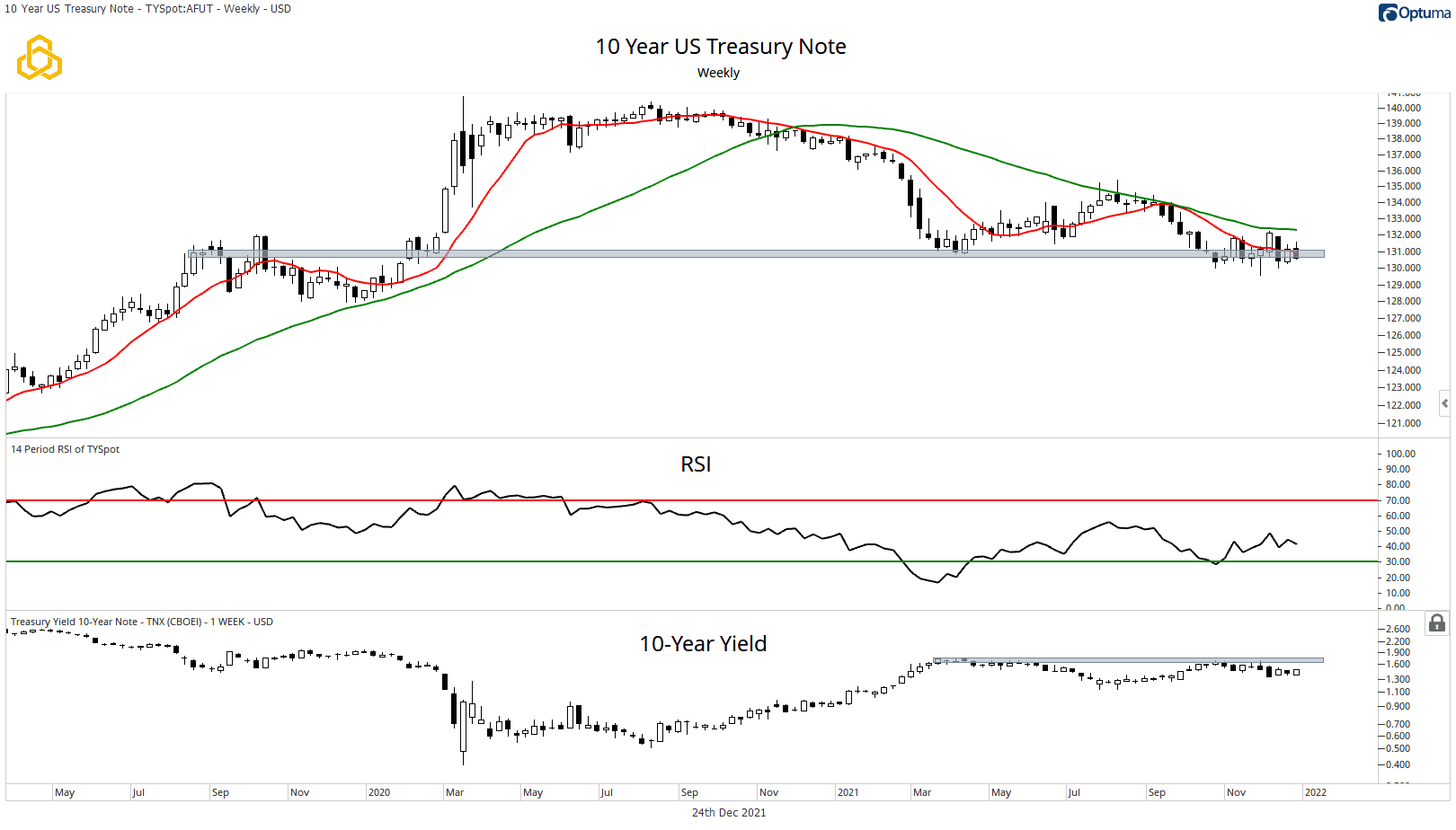
Apart from 2-Year Yields, price action remained muted across the curve. 2-Year Yields regained all the loss from the prior week, closing out this week at 68.8bps. 5-Year Yields closed higher on the week but were unable to recoup the downside action from the week prior.
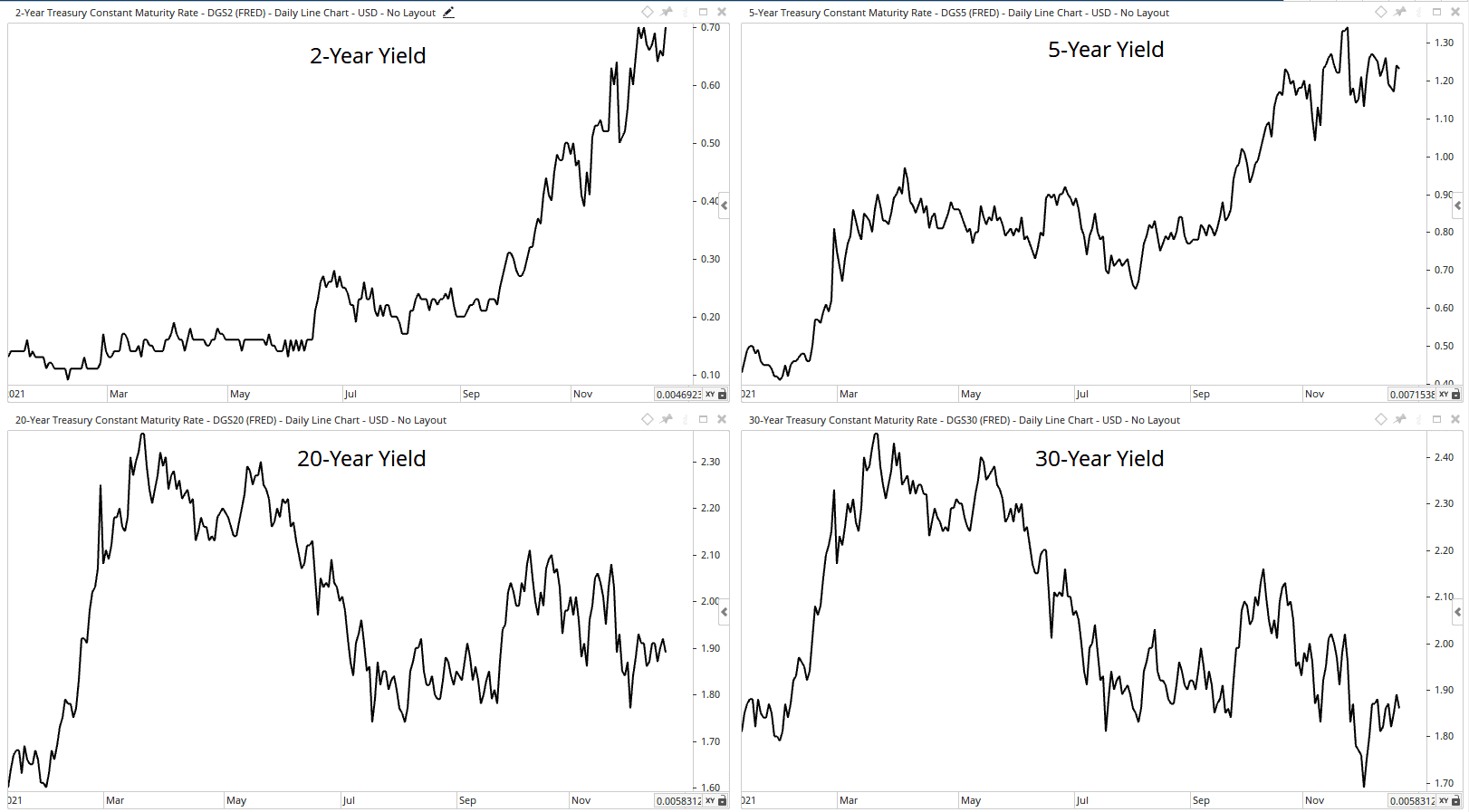
Global Equities
The Global Dow opened the week at the 40-week moving average, regained ground, and closed above the 10-week average. The 7-month long slog of sideways action has started to take its toll on the moving averages as they begin to flatten, and while 14-week RSI leaves much to be desired from a bullish standpoint, we do note that it has held the same bullish range that’s defined the uptrend post-COVID crash. Much like the NASDAQ Composite, the risk for the index lies on a relative basis vs. the S&P 500 trading up to the 52 resistance level after breaking down on a relative basis. Until there’s a price breakout above 4,135 and a significant improvement on a relative basis, it remains difficult to be constructive in this space.
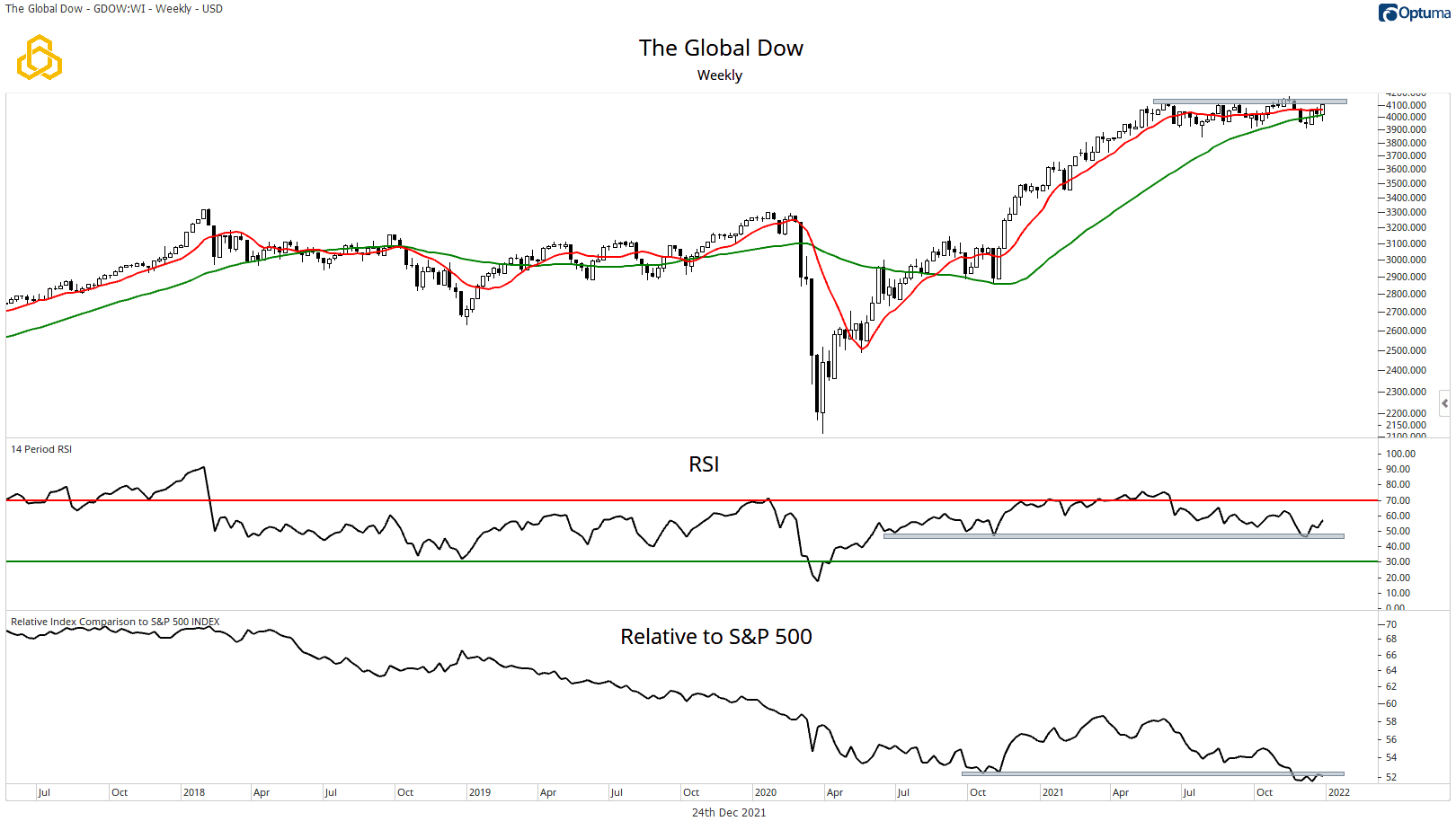
Commodities
After consolidating at 97 support and the 40-week moving average for three weeks, Commodities finally garnered the strength to close higher on the week for a +2.5% rally. While 14-week RSI remains in a bullish range, we note the inability to overcome the August lows in momentum, as well as the price remaining below a declining 10-week moving average. Relative to the S&P 500, Commodities remain flat and trendless—not breaking down, but not breaking out. The long-term trend for this space is still bullish despite these developments, but we need to see more evidence relative to the S&P 500 to be more constructive.
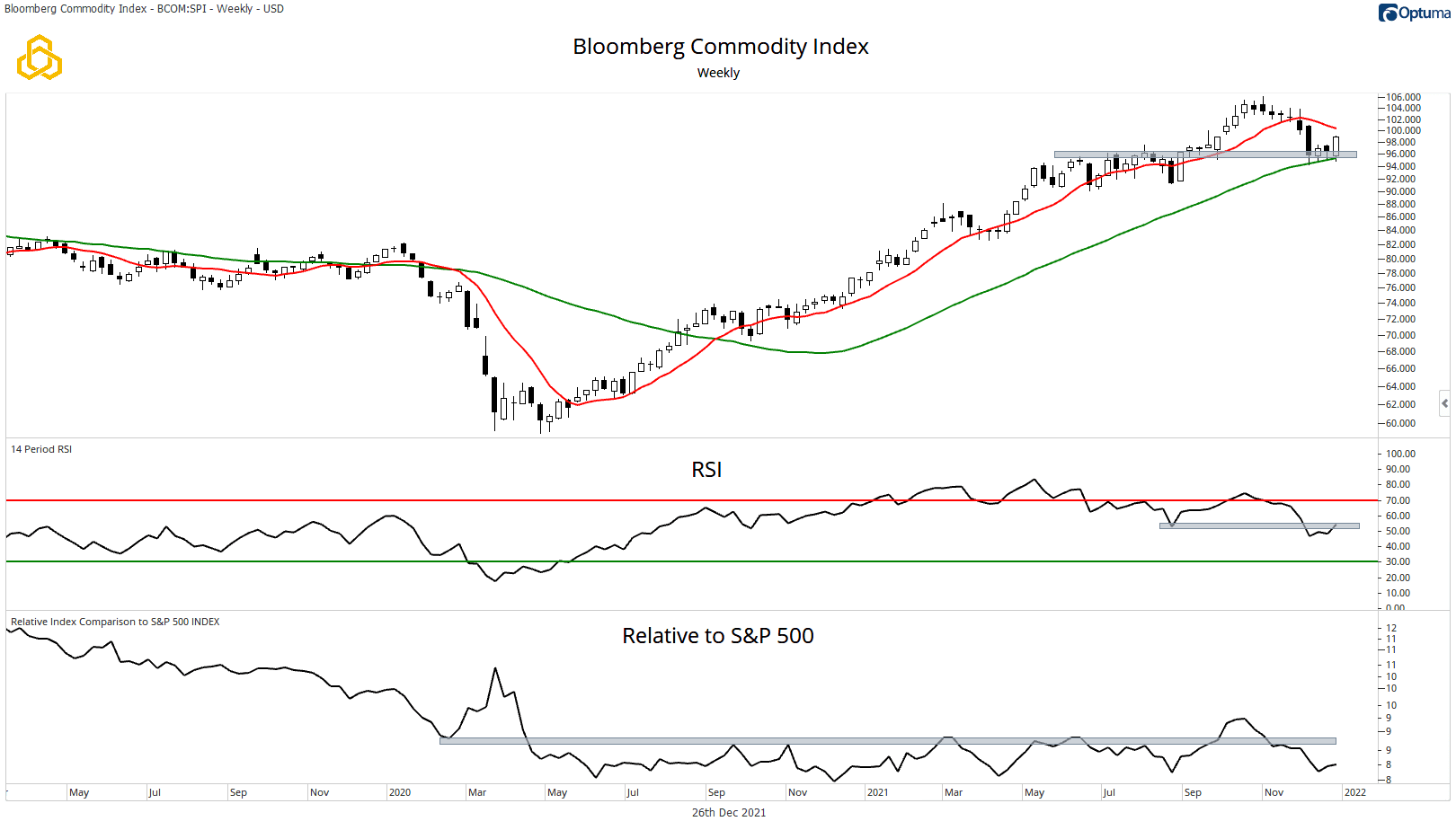
Within the Commodities space, all four subsets gained strength last week:
- Precious Metals – more upside headroom to the 2,375 level.
- Industrial Metals – testing upside resistance at 500, a level the bulls gave up in late October.
- Agriculture – higher lows and higher highs define the trend, arguably the strongest in the space.
- Energy – testing 250 resistance, bullish on a breakout and bearish below this level.
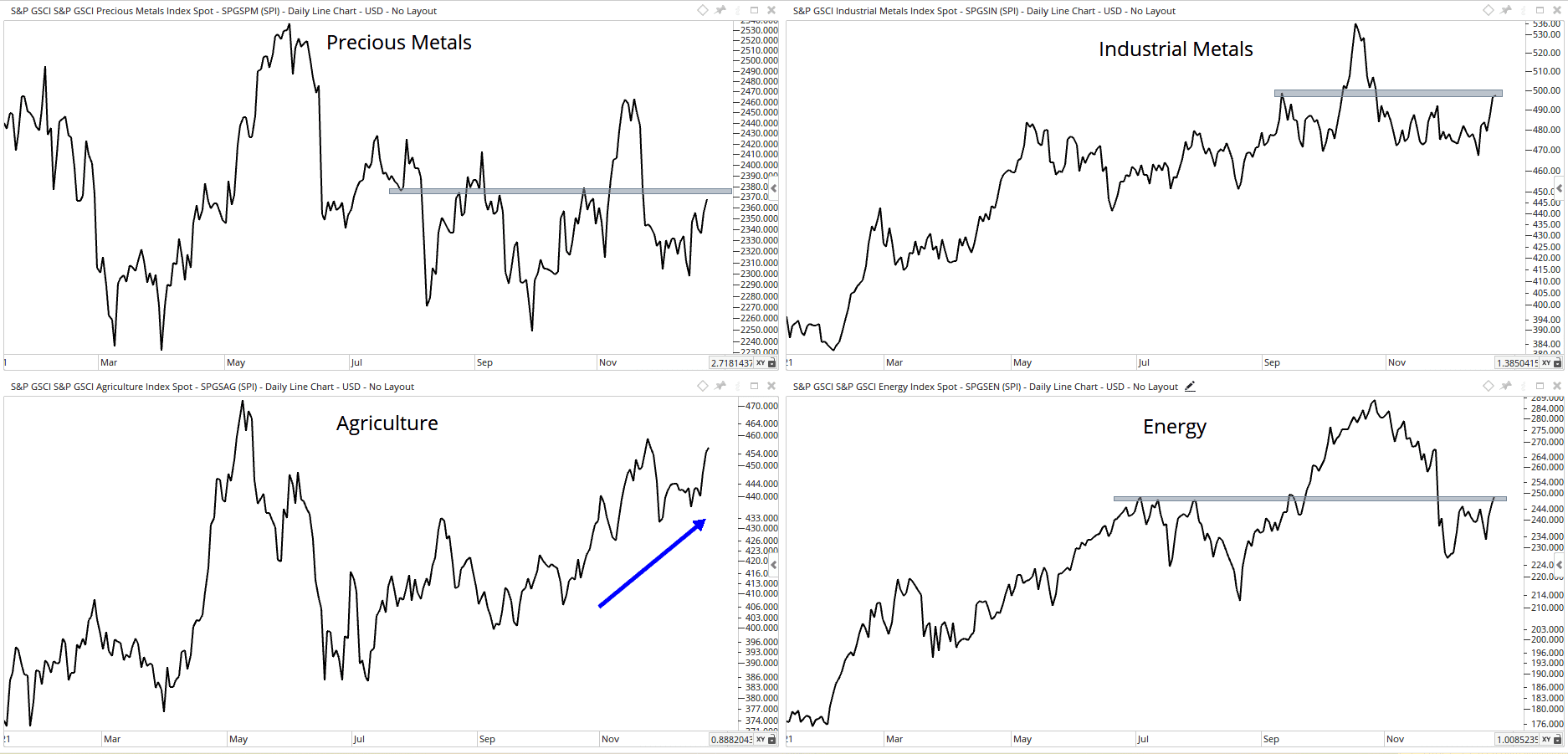
The Dollar
Last week, the US Dollar sold off and is currently testing support at 96 above rising 10 & 40-week moving averages. 14-week RSI is still printing higher lows within a rising trend, and our bias remains to the upside at these levels. Should DXY break down through 96, 94.50 would come into play to the downside.
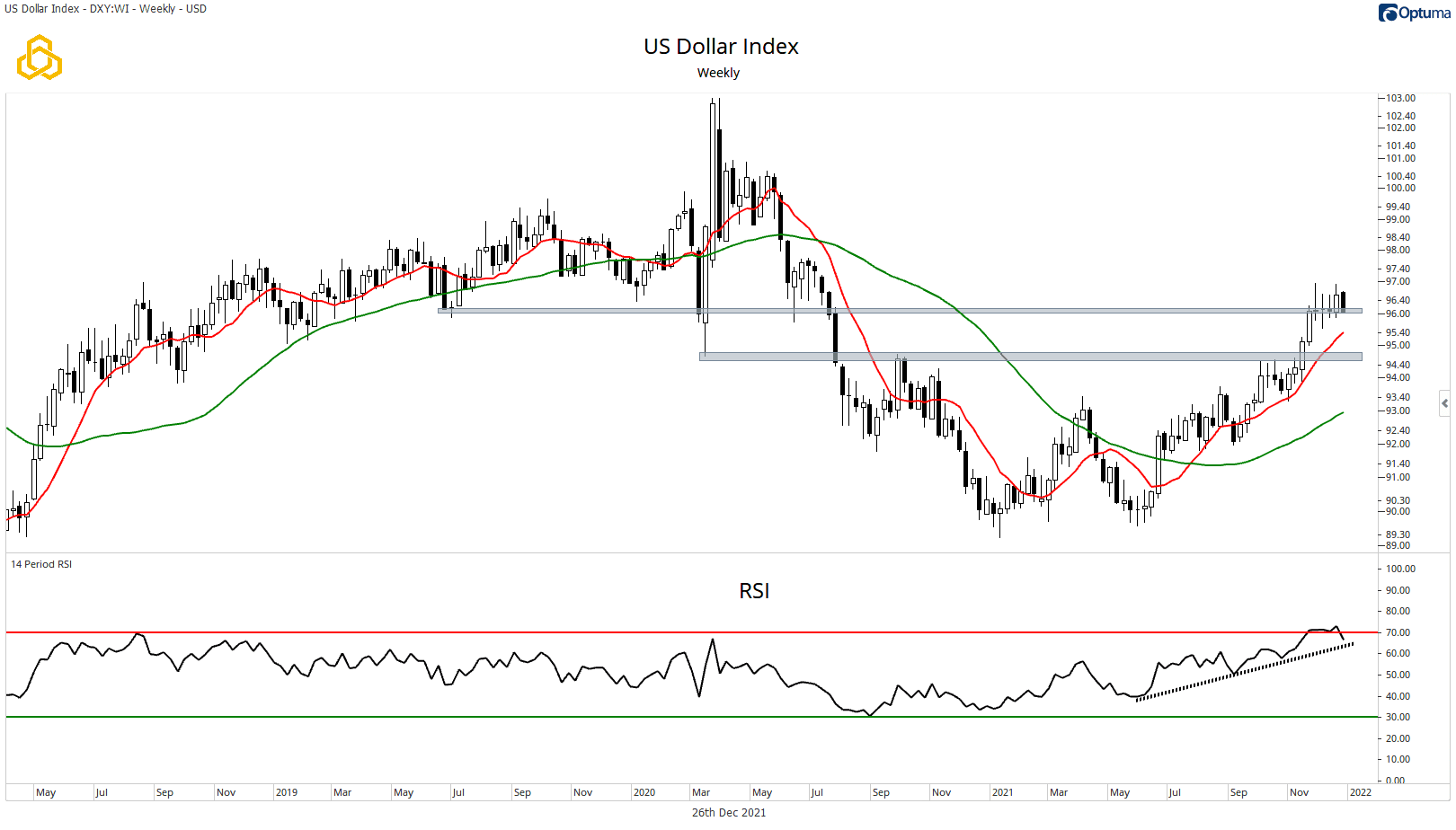
Take-Aways:
In the previous week, risk assets largely improved across the board, though we note several market areas are currently testing resistance levels. Bears will site the momentum divergence in the S&P 500, Small Cap’s inability to break out to the upside, and a strong Dollar trend as their main arguments. Bulls will note that the Large Cap indices’ ability to continue rallying in the face of these developments is a sign of strength and demand for risk assets. All eyes remain fixed on the bond market at the 10-Year Note. As it tests support and garners energy for a future directional move, we watch the flattening curve continue to play out. While bullish long-term trends continue for risk assets such as Large Cap stocks and commodities, we’re mindful of the bear case and are watching price for confirmation. For now, the bulls remain in control.
Disclosure: This information is prepared for general information only and should not be considered as individual investment advice nor as a solicitation to buy or offer to sell any securities. This material does not constitute any representation as to the suitability or appropriateness of any investment advisory program or security. Please visit our FULL DISCLOSURE page.
